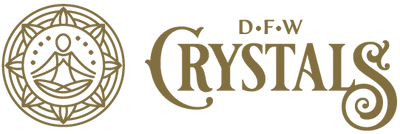Tarot cards have captivated people for centuries with their enigmatic imagery and mystical allure. The cards are a powerful divination tool that can guide you and provide profound insight and knowledge.
A Brief History of the Tarot

The exact origins of the tarot are uncertain. However, we know that their use was first recorded in Europe in the 14th century. Although they were initially used as playing cards, they gradually transitioned into tools for divination. This transformation most likely occurred mainly during the 18th and 19th centuries, when occultists became intrigued by the cards' deep symbolism and archetypal meanings.
In 1910 the famous Rider-Waite deck was introduced, marking a significant turning point in the popularity and influence of tarot cards. With its iconic imagery, this deck has become the most widely recognized and used tarot deck in the modern era.
Understanding Tarot Cards
All tarot decks consist of two main parts: The Major Arcana and the Minor Arcana.
The Major Arcana consists of 22 cards that represent major life changes, spiritual growth, and powerful archetypal energies. Some notable cards include The Fool, which symbolizes new beginnings and risk-taking; Death, signifying transformation and change; and The Lovers, representing love and partnership.
The Minor Arcana expands on the themes introduced in the Major Arcana. It consists of 56 cards divided into four suits which each represent specific themes:
-
Wands: The element of fire, creativity, inspiration, personal growth, and energy.
-
Cups: The element of water, emotions, intuition, relationships, and spiritual connections
-
Swords: The element of air, the intellect, thoughts, communication and rational thinking.
-
Pentacles: The element of earth, the material world, wealth, career, health, and practical matters.
Within each suit, there are numbered cards (ace to ten) representing different stages or aspects of the suit's theme. Each suit also has court cards (Page, Knight, Queen, and King), which embody different personalities and roles.
Choosing Your Tarot Deck

The first step to successfully learning tarot is choosing a deck that you resonate with. It's essential that you really resonate with the deck's imagery and energy, so take your time to explore the different options available.
If you need help figuring out where to start, a popular beginner's deck is the Rider-Waite deck mentioned earlier. Many tarot guides are tailored to this deck, which makes it easier to understand and interpret the cards.
If you like the idea of the Rider-Waite deck but want something different, several decks draw inspiration from the Rider-Waite, such as the Witches Tarot or the Herbal Tarot.
Getting Started with Tarot Cards
Once you have our first tarot deck, a great starting point is to study the individual cards and their meanings. Countless books, online guides, and tutorial videos can help give you insight into the world of tarot.
You can opt for a general overview of the cards and then dive right into divination, exploring each card in-depth as it comes up in a reading. Or you may prefer a more deliberate approach, taking your time to thoroughly study each card before embarking on your first divination. The choice is yours - let your intuition be the guide!
The next step is to familiarize yourself with different spreads (layouts used to organize the cards during a reading). Some well-known spreads include:
-
Three-Card Spread: A simple spread that gives concise answers to a specific question. The first card represents the past or the root of the issue, the second card symbolizes the present, and the third represents the potential outcome.
-
The Celtic Cross Spread: Consists of ten cards arranged into a cross. This spread provides insight into the current situation, the challenges and influences at play, and outcomes and guidance for the future.
-
The Horseshoe Spread: This spread consists of seven cards arranged in a semicircle or horseshoe shape. It offers an in-depth view of the situation and is often used for readings focusing on a specific challenge or problem.
Conclusion

Building a personal relationship with the tarot requires regular use and reflection. Allow the cards to speak to you and meditate on their meanings. While understanding traditional interpretations is valuable, trusting your intuition and letting it guide your readings is equally important.
Embrace the magic of the tarot, and let the symbolic language of the cards speak to your soul. They have the potential to be a beautiful guiding light on your path of personal and spiritual growth.



Leave a comment